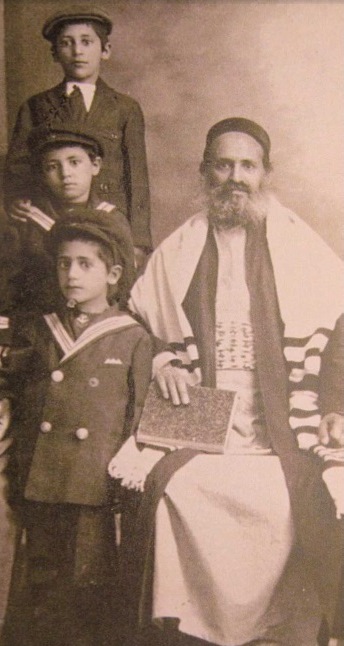|
Avraham Al-Naddaf
Avraham Al-Naddaf () (1866–1940), the son of Ḥayim b. Salem Al-Naddaf, was a Yemenite rabbi and scholar who immigrated to Ottoman Palestine in 1891, eventually becoming one of the members of the Yemenite rabbinical court (''Beit-Din'') established in Jerusalem in 1908, and active in public affairs. His maternal grandfather was Rabbi Yiḥya Badiḥi (1803–1887), the renowned sage and author of the Questions & Responsa, ''Ḥen Ṭov'', and a commentary on the laws of ritual slaughter of livestock, ''Leḥem Todah'', who served as the head of Sanaa's largest seat of learning (yeshiva), held in the synagogue, ''Bayt Saleḥ'', before he was forced to flee from Sana'a in 1846 on account of the tyrant, Abū-Zayid b. Ḥasan al-Miṣrī, who persecuted the Jews under the Imam Al-Mutawakkil Muhammad. Early life and upbringing Born in Qaryat al-Qabil, Yemen, in 1866, he began to study the Hebrew alphabet at the age of three, followed by Torah and the Aramaic Targum of Onkelos at ... [...More Info...] [...Related Items...] OR: [Wikipedia] [Google] [Baidu] |
Yemenite Jews
Yemenite Jews or Yemeni Jews or Teimanim (from ''Yehudei Teman''; ar, اليهود اليمنيون) are those Jews who live, or once lived, in Yemen, and their descendants maintaining their customs. Between June 1949 and September 1950, the overwhelming majority of Yemen's Jewish population immigrated to Israel in Operation Magic Carpet. After several waves of persecution throughout Yemen, the vast majority of Yemenite Jews now live in Israel, while smaller communities live in the United States and elsewhere. Only a handful remain in Yemen. The few remaining Jews experience intense, and at times violent, anti-Semitism on a daily basis. Yemenite Jews have a unique religious tradition that distinguishes them from Ashkenazi Jews, Sephardi Jews, and other Jewish groups. They have been described as "the most Jewish of all Jews" and "the ones who have preserved the Hebrew language the best". Yemenite Jews fall within the "Mizrahi" (eastern) category of Jews, though they differ ... [...More Info...] [...Related Items...] OR: [Wikipedia] [Google] [Baidu] |
Obadiah Ben Abraham Bartenura
Obadiah ben Abraham of Bertinoro ( he, ר׳ עוֹבַדְיָה בֵּן אַבְרָהָם מִבַּרְטֵנוּרָא; 1445 – 1515), commonly known as "The Bartenura", was a 15th-century Italian rabbi best known for his popular commentary on the Mishnah. In his later years, he rejuvenated the Jewish community of Jerusalem and became recognised as the spiritual leader of the Jews of his generation. Arrival in the Land of Israel Obadiah was a pupil of Joseph Colon Trabotto (''Maharik''), and became rabbi in Bertinoro, a town in the modern province of Forlì-Cesena, whence he derived his by-name, and in Castello.Ginzberg (1906) in Jewish Encyclopedia. "The desire to visit the Holy Land led him to Jerusalem; and he arrived there on March 25, 1488, having commenced his journey Octber29, 1486. His advent in Palestine marked a new epoch for the Jewish community there. ... The administration of Jewish communal affairs in Jerusalem had fallen into the hands of iniquitous off ... [...More Info...] [...Related Items...] OR: [Wikipedia] [Google] [Baidu] |
Sephardic
Sephardic (or Sephardi) Jews (, ; lad, Djudíos Sefardíes), also ''Sepharadim'' , Modern Hebrew: ''Sfaradim'', Tiberian Hebrew, Tiberian: Səp̄āraddîm, also , ''Ye'hude Sepharad'', lit. "The Jews of Spain", es, Judíos sefardíes (or ), pt, Judeus sefarditas or Hispanic Jews, are a Jewish diaspora population associated with the Iberian Peninsula. The term, which is derived from the Hebrew ''Sepharad'' (), can also refer to the Mizrahi Jews of Western Asia and North Africa, who were also influenced by Sephardic law and customs. Many Iberian Jewish exiles also later sought refuge in Mizrahi Jewish communities, resulting in integration with those communities. The Jewish communities of the Iberian Peninsula prospered for centuries under the Muslim reign of Al-Andalus following the Umayyad conquest of Hispania, but their fortunes began to decline with the Christians, Christian ''Reconquista'' campaign to retake Spain. In 1492, the Alhambra Decree by the Catholic Monarchs of ... [...More Info...] [...Related Items...] OR: [Wikipedia] [Google] [Baidu] |


